The Digital Revolution in Mental Health
REINTEGRATION OF PSYCHIATRY INTO THE HOSPITAL
Successes in off-label use of implantable brain devices for sleep, arousal and attention will spur an elective brain enhancement industry. Robot-guided anesthesia, biological computer chips and AI-guided surgery will increase safety and cut surgical time drastically. Inevitably, these devices will be installed endoscopically, greatly enhancing their general adoption and elective appeal.
Advanced neuroimaging will become de facto in the diagnosis and treatment of many mental diseases, bringing psychiatric patients back into the hospital. Of course, someone will have to pay, given that NIMH data indicate that one in five Americans experiences a mental illness in a given year.
A dry central nervous system (CNS) drug pipeline and the hit-or-miss effectiveness of current CNS drugs will accelerate imaging-based drug efficacy studies. In combination with genomic data and stem cell–based in vitro drug screenings, these technologies will precede a revolution in personalized, patient-directed drug treatment. No longer will psychiatrists pull their first medications for a patient out of a hat. It might not even be psychiatrists doing the prescribing—psychiatry could become a radiological science.
A form of reinstitutionalization will become increasingly popular, modeled after addiction clinics. Private addiction centers available today will be bought up or expand into psychotic and depressive treatment centers, all of which offer short-term treatment and care. The balance between reinstitutionalization and personal autonomy will reemerge as a major social and political debate.
Psychiatrists remain the only medical specialists that rarely look at the organ they treat.
—Dr. Daniel Amen
Brain disorder specialist and director of the Amen Clinics
MENTAL HEALTH IS THE NEW DIABETES
Major neurodegenerative diseases and those often associated with aging will become “diabetes-like,” requiring a lifetime of early detection, care and intervention. At a point when options to intervene match disease detection (via genomics, behavior tracking, imaging and/or biopsy), those neurodegenerative diseases found to be largely preventable will create a new class of “previvor” patients—up to 25% of the US—that need chronic treatment on a recurring basis. Today’s companies focusing on “brain training” will pivot to absorb this massive source of revenue, and private clinics will pop up everywhere offering regular treatments.
Bioelectronic implants in the blood or CNS will monitor and one day intervene. As implanted, home and interventional sensors begin to allow homeostatic or metabolic feedback models for maintenance of many illnesses, “pacemakers” will find their way into the CNS.
Depending on the adoption rates of embryonic prescreening, genetic intervention or assisted reproduction, genomic risk factors and accelerants for many age-related diseases will be removed from the general population in only a few generations. Such genomic vaccinations will outpace research into a cure for such diseases. Alzheimer’s may never be cured, but simply removed from Western populations.
THE PSYCHOACTIVE COMEBACK
Today, drugs for mental disease are by and large variations of those deemed effective decades ago. These have failed to stem the rising tide of mental illness in the US. Succumbing to mounting social pressures, the FDA will reschedule the psychoactive components of many recreational drugs—MDMA, psilocybin, ketamine, ibogaine—and their derivatives.
Patentable derivatives will reawaken the dry CNS clinical pipeline and outmaneuver the social and legal complexities of adoption.
Recent data suggest that ketamine, given intravenously, might be the most important breakthrough in antidepressant treatment in decades.
—Dr. Tom Insel
Former head of the NIMH
SLEEP
One in three adults does not get enough sleep, despite its prominence in basic health. Apnea affects 18 million in the US, with a market of $4 billion per year in medical devices.
4% of US adults over age 20 use a prescription sleep aid.
It is thought that sleep disturbance is a core component in many psychotic and mood disorders, often exacerbating or causing some symptoms. As non-pharmacological sleep aid treatments become effective, diagnoses of sleep disorders will increase drastically. The major driver of bio-electronic, elective brain implants will be maintenance of sleep and wakefulness. The NIH will declare the 2020s the “Decade of Sleep.”
Smart mattresses will record sleep patterns, light, temperature and pressure to personalize sleep. A combination of AI and wearable sensors will allow for precisely timed waking during the optimal sleep phase.
Active brainwave monitoring in combination with basic brain implants will be able to prevent or interrupt the memory and subjective experience of nightmares, relieving sufferers of trauma-related mental disease.
-
2800
Sleep labs in the US
-
$7B
Annual billings for sleep disorder diagnoses
TECHNOLOGY SUPPLEMENTATION
On-demand therapy and cognitive training via smartphones, VR or tele- presence will replace all but acute crises in psychiatry.
“Nudging” apps will subtly prompt beneficial behavior, and stress-reduction algorithms in navigation systems will route drivers with hypertension or anxiety around high-traffic areas.
